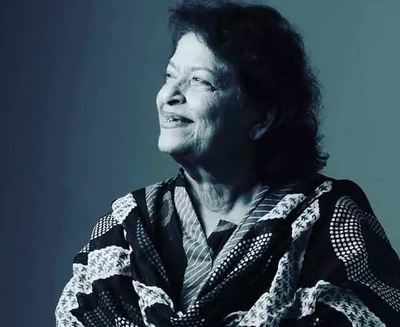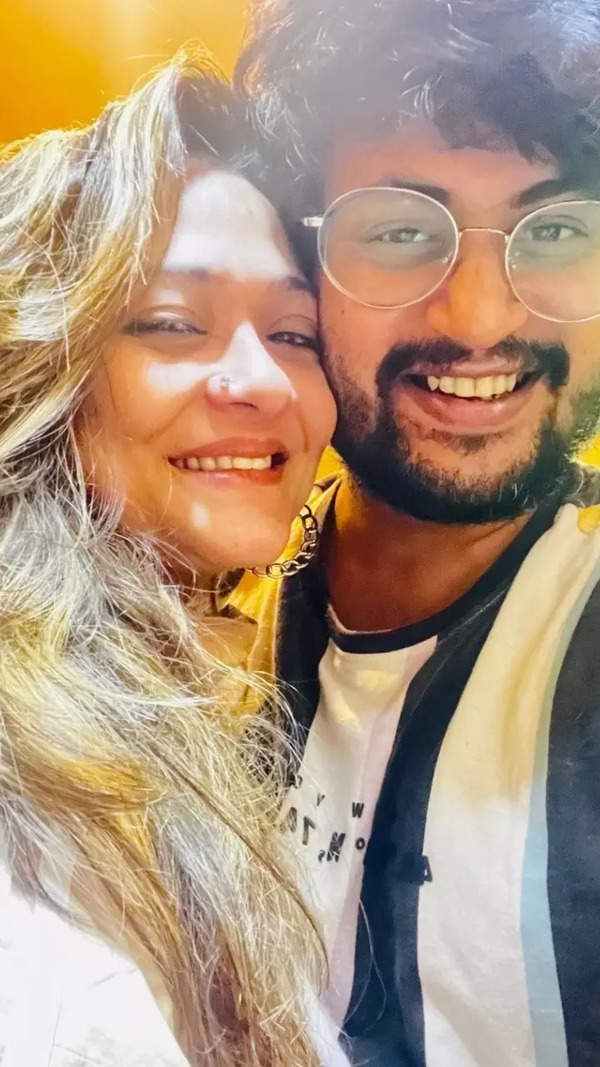- News
- entertainment
- hindi
- bollywood
- Woman who broke into a male domain, gave Madhuri and Sridevi their moves
Trending
This story is from July 4, 2020
Woman who broke into a male domain, gave Madhuri and Sridevi their moves

Saroj Khan, who tossed aside gender barriers in the male-dominated world of choreographers in Hindi cinema and composed the signature moves that paved Madhuri Dixit’s rise to stardom in the 1980s, passed away on Friday. She was 71. She died of cardiac arrest at Mumbai’s Guru Nanak Hospital, where she was admitted in June after developing breathing problems, news agency ANI reported.
Tracks choreographed by Saroj for Madhuri such as Ek Do Teen (Tezaab), Choli Ke Peechhe Kya Hai (Khalnayak), Dhak Dhak Karne Laga (Beta) and Humko Aaj Kal Hai (Sailaab) blended sensuality with rhythm; the jhatkas and mudras are aped at dance parties and ‘ladies’ sangeet ceremonies even today.No choreographer, male or female, has won as many Filmfare awards: eight.
“I'm devastated by the loss of my friend and guru, Saroj Khan. Will always be grateful for her work in helping me reach my full potential in danc…” Dixit tweeted.

The award was worthy recognition for decades of hard work in a life that defeated extreme poverty. Born Nirmala, her Punjabi-Sindhi parents left Karachi for Bombay during the Partition. The family lived in a one-room tenement in Mahim. A neighbour who ran a food stall offered them the unsold leftovers. “I was raised on pyaaj ki bhajiya (onion fritters) and bread,” she said in the 2014 documentary, The Saroj Khan Story.
Saroj worked as a child actor (Nazrana, Aagosh), a group dancer (Aaiyye meherbaan, Howrah Bridge), even trained as a nurse, before becoming assistant to noted dance director B Sohanlal.
“She trained under my uncle Sohanlal-ji, learnt Indian folk, classical gestures and Indo-Western style movements,” said Prakash. In Nidhi Tuli’s documentary, Saroj also recalls falling in love with Sohanlal, bearing a child and then parting. She later married businessman Sardar Roshan Khan.
Choreography was a male preserve in Bombay cinema -- PL Raj, Gopi Krishna, Badri Prasad, Kamal, Herman Benjamin, to name a few. “She was the first female choreographer in north India and had a tough time entering the field. Girls were only assistants then,” says Chinni Prakash.
She got her break in actress Sadhana’s production Geeta Mera Naam (1974). Among those who backed her was film-maker Subhash Ghai. “However, it was not until Ghai’s Hero (1983) that Khan became a name to be reckoned with,” says Encyclopaedia of Hindi Cinema.
Prakash recalled how she acted out expressions for Madhuri or Sridevi. “Her adayaein (facial expressions), her hand movements were her specialty,” he said. In a post, film sociologist Susmita Dasgupta too said the choreographer made the song reside in the body of the dancer. “Saroj Khan used the conventional formula to let the body carry the song,” she wrote.
Her success opened the doors for other women choreographers. Director-choreographer Farah Khan posted, “…U were an inspiration to many, myself included. Thank you for the songs.”
Tracks choreographed by Saroj for Madhuri such as Ek Do Teen (Tezaab), Choli Ke Peechhe Kya Hai (Khalnayak), Dhak Dhak Karne Laga (Beta) and Humko Aaj Kal Hai (Sailaab) blended sensuality with rhythm; the jhatkas and mudras are aped at dance parties and ‘ladies’ sangeet ceremonies even today.No choreographer, male or female, has won as many Filmfare awards: eight.
“I'm devastated by the loss of my friend and guru, Saroj Khan. Will always be grateful for her work in helping me reach my full potential in danc…” Dixit tweeted.
It wasn’t just Madhuri. Saroj’s shimmies and shakes made Sridevi’s Hawa hawaai and the snake dances of Nagina iconic. But it was the symphonic sway of Dola Re Dola (Devdas), where Aishwarya Rai and Madhuri breathtakingly match steps and smiles that fetched Saroj a National Award for best choreography. “Nobody would have dreamt of doing what she did in Dola Re Dola,” said fellow choreographer Chinni Prakash.

The award was worthy recognition for decades of hard work in a life that defeated extreme poverty. Born Nirmala, her Punjabi-Sindhi parents left Karachi for Bombay during the Partition. The family lived in a one-room tenement in Mahim. A neighbour who ran a food stall offered them the unsold leftovers. “I was raised on pyaaj ki bhajiya (onion fritters) and bread,” she said in the 2014 documentary, The Saroj Khan Story.
Saroj worked as a child actor (Nazrana, Aagosh), a group dancer (Aaiyye meherbaan, Howrah Bridge), even trained as a nurse, before becoming assistant to noted dance director B Sohanlal.
“She trained under my uncle Sohanlal-ji, learnt Indian folk, classical gestures and Indo-Western style movements,” said Prakash. In Nidhi Tuli’s documentary, Saroj also recalls falling in love with Sohanlal, bearing a child and then parting. She later married businessman Sardar Roshan Khan.
Choreography was a male preserve in Bombay cinema -- PL Raj, Gopi Krishna, Badri Prasad, Kamal, Herman Benjamin, to name a few. “She was the first female choreographer in north India and had a tough time entering the field. Girls were only assistants then,” says Chinni Prakash.
She got her break in actress Sadhana’s production Geeta Mera Naam (1974). Among those who backed her was film-maker Subhash Ghai. “However, it was not until Ghai’s Hero (1983) that Khan became a name to be reckoned with,” says Encyclopaedia of Hindi Cinema.
Prakash recalled how she acted out expressions for Madhuri or Sridevi. “Her adayaein (facial expressions), her hand movements were her specialty,” he said. In a post, film sociologist Susmita Dasgupta too said the choreographer made the song reside in the body of the dancer. “Saroj Khan used the conventional formula to let the body carry the song,” she wrote.
Her success opened the doors for other women choreographers. Director-choreographer Farah Khan posted, “…U were an inspiration to many, myself included. Thank you for the songs.”
End of Article
FOLLOW US ON SOCIAL MEDIA








